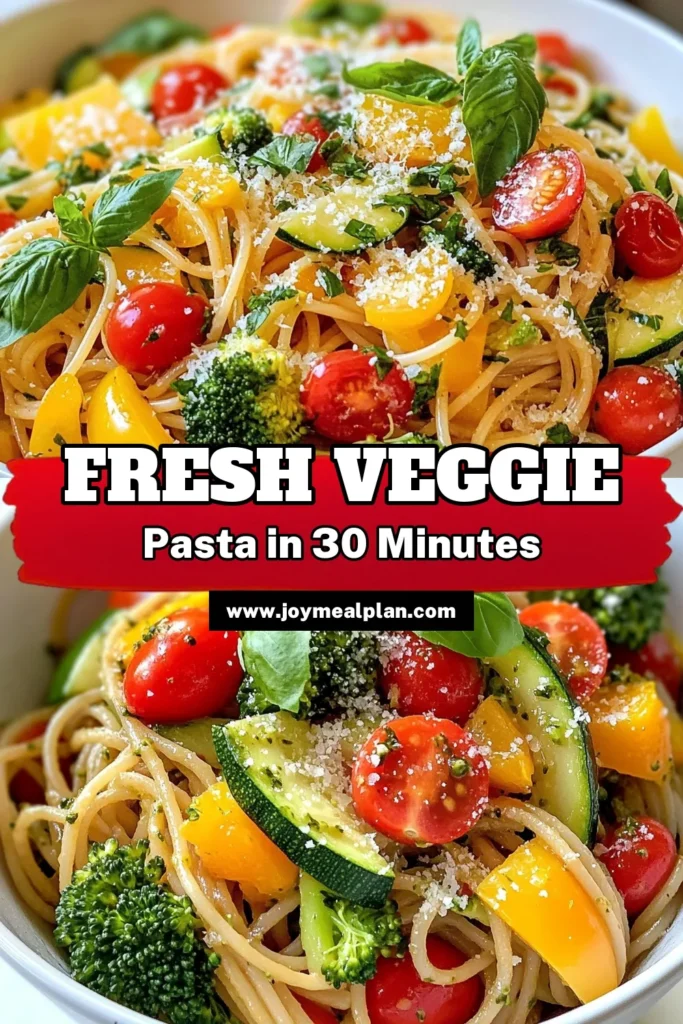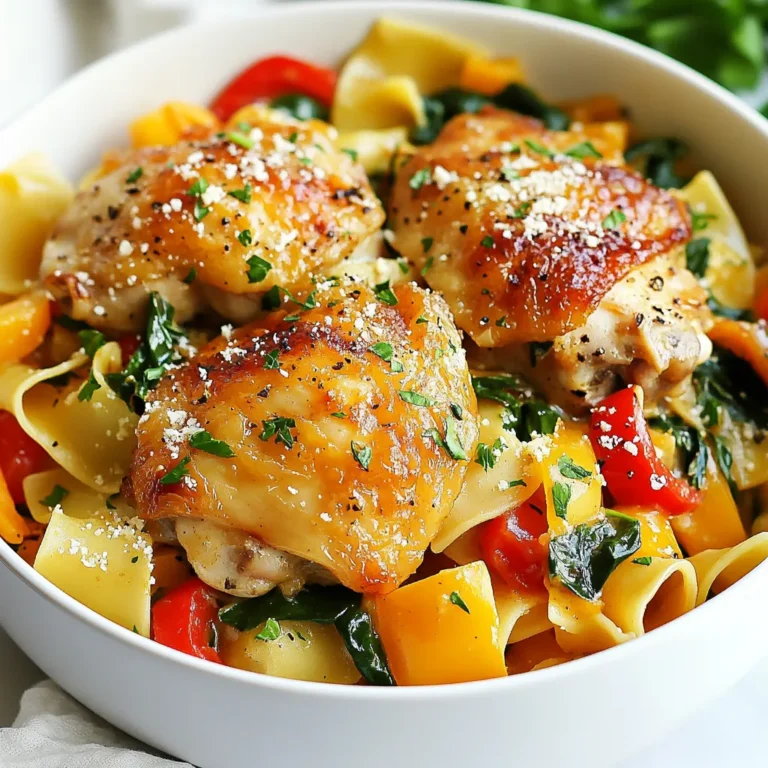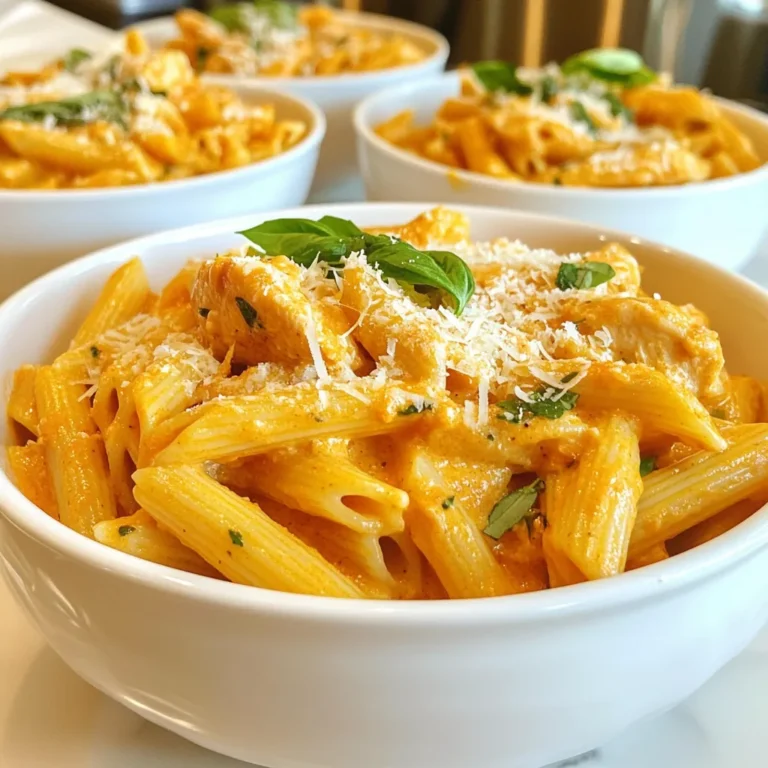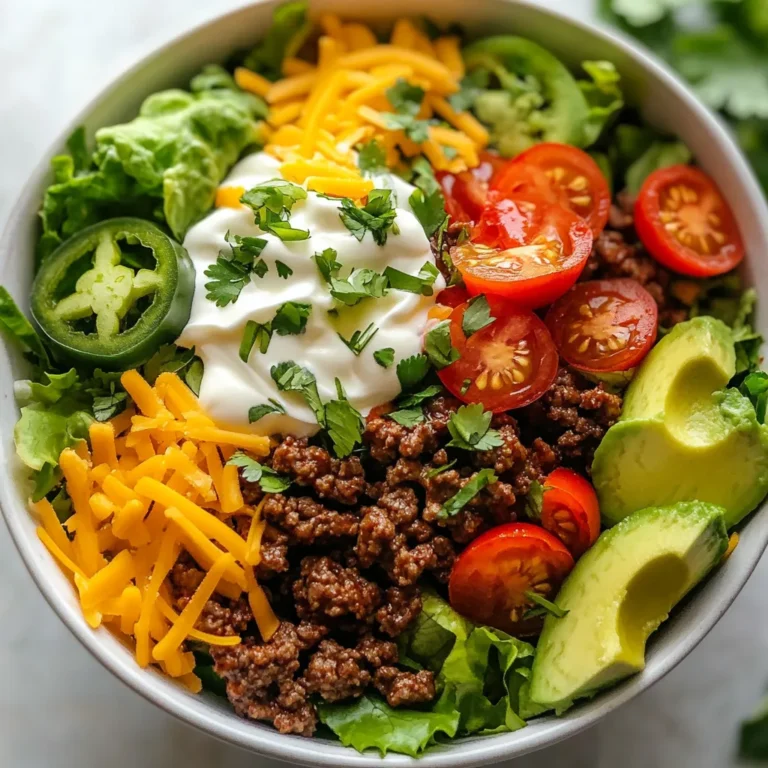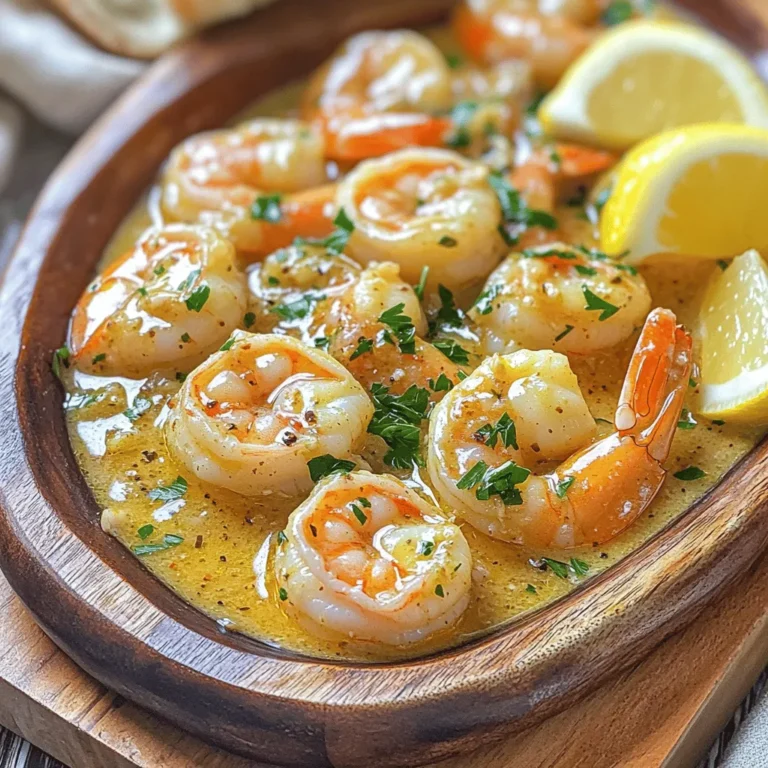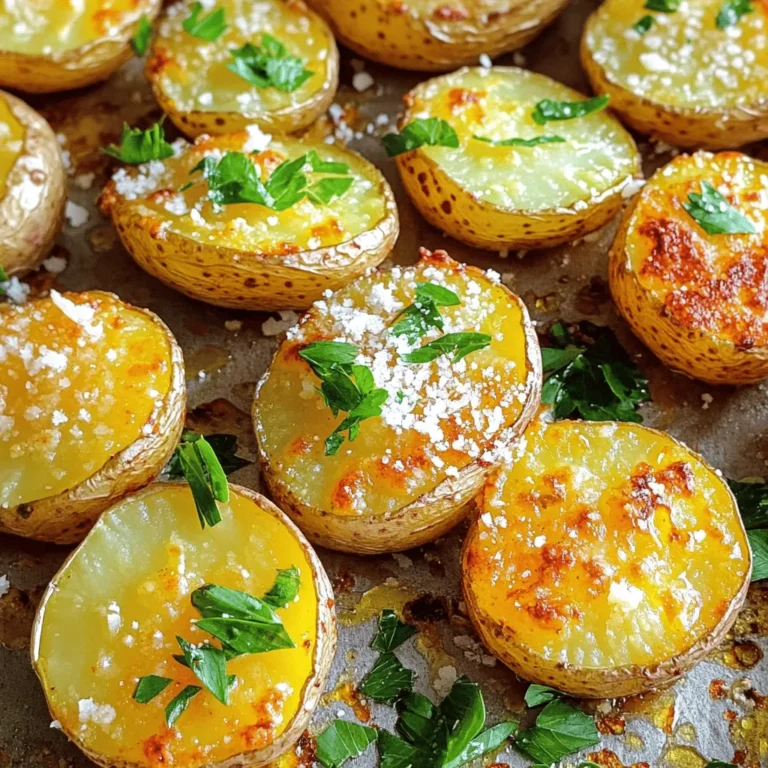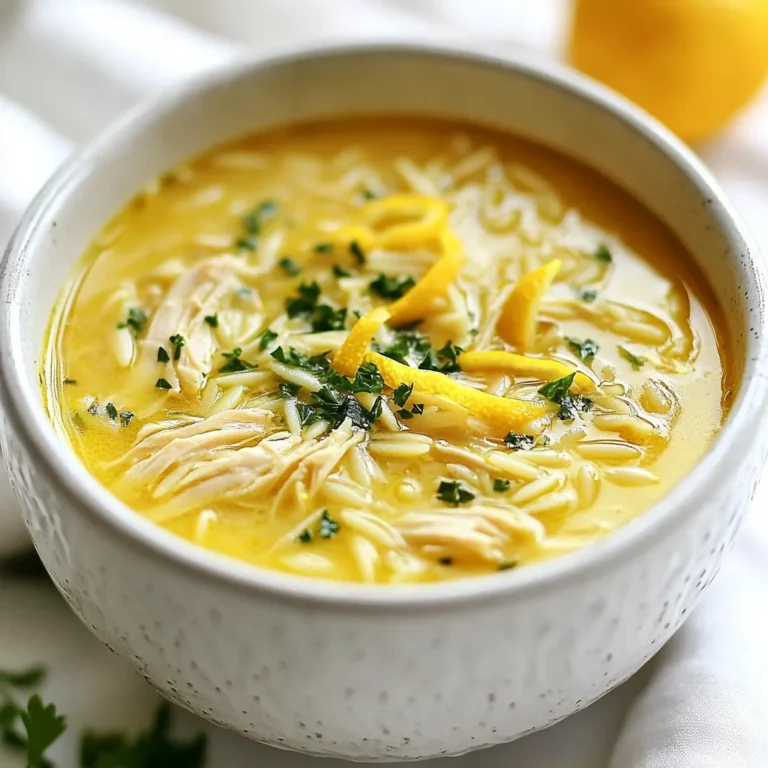Vegetarian Pasta Primavera Fresh and Flavorful Dish
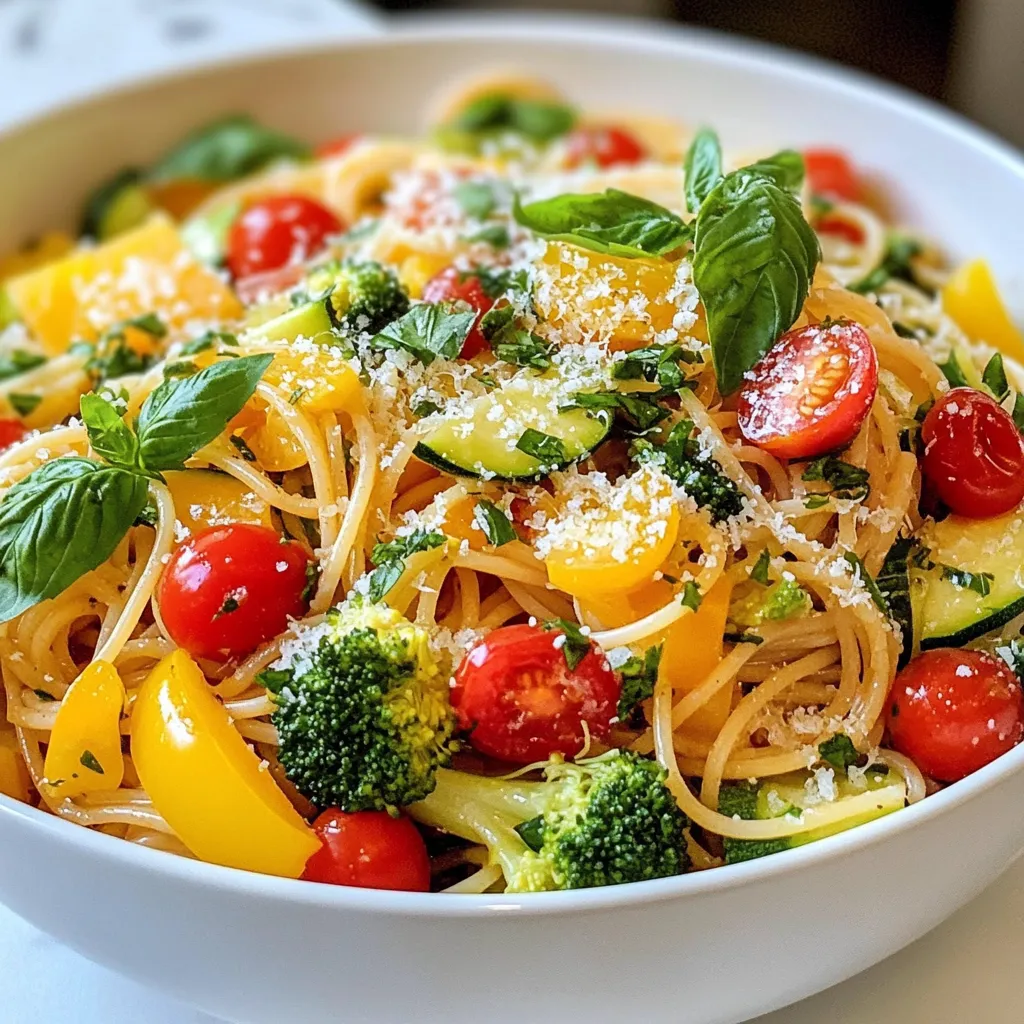
If you love fresh and colorful meals, you’ll adore this Vegetarian Pasta Primavera! This dish bursts with vibrant vegetables and flavors, making it perfect for any occasion. I’ll guide you through each step, ensuring you can create a quick, healthy meal with ease. Whether you’re a seasoned cook or just starting, you’ll find helpful tips, delicious variations, and storage advice right here. Let’s dive into this tasty adventure together!
Why I Love This Recipe
- Healthy and Nutritious: This pasta primavera is packed with vibrant vegetables, making it a great way to incorporate more nutrients into your diet.
- Quick and Easy: With a prep time of just 10 minutes, this dish is perfect for busy weeknights without sacrificing flavor.
- Customizable: You can easily swap in your favorite vegetables or pasta types, tailoring the dish to your preferences.
- Deliciously Flavorful: The combination of fresh herbs and garlic creates a delightful aroma and taste that elevates the whole dish.
Ingredients
List of Ingredients
To make a delicious Vegetarian Pasta Primavera, you’ll need:
– 8 oz. whole wheat pasta (spaghetti or penne)
– 2 tablespoons extra virgin olive oil
– 1 small zucchini, thinly julienned
– 1 bell pepper (red or yellow), sliced into thin strips
– 1 cup cherry tomatoes, halved
– 1 cup broccoli florets, cut into bite-sized pieces
– 1 medium carrot, thinly sliced
– 3 cloves garlic, finely minced
– 1 teaspoon dried oregano
– 1 teaspoon dried basil
– Salt and freshly ground pepper to taste
– ¼ cup grated Parmesan cheese (or nutritional yeast for vegan)
– Fresh basil leaves, for garnish
Substitutions for Dietary Preferences
You can easily adjust this recipe for different diets:
– For gluten-free, choose a gluten-free pasta.
– Swap Parmesan with nutritional yeast for a vegan option.
– Use any seasonal veggies you have on hand, like asparagus or spinach.
– For extra protein, add chickpeas or tofu.
Tips for Selecting Fresh Produce
When picking your veggies, look for these signs:
– Choose zucchini that feels firm and has a smooth skin.
– Pick bell peppers that are bright and have no soft spots.
– Select cherry tomatoes that are plump and fragrant.
– For broccoli, look for tight florets and vibrant green color.
– Fresh herbs should smell strong and be free of brown spots.
These tips will help you find the freshest and best-tasting produce for your Pasta Primavera. Enjoy cooking!
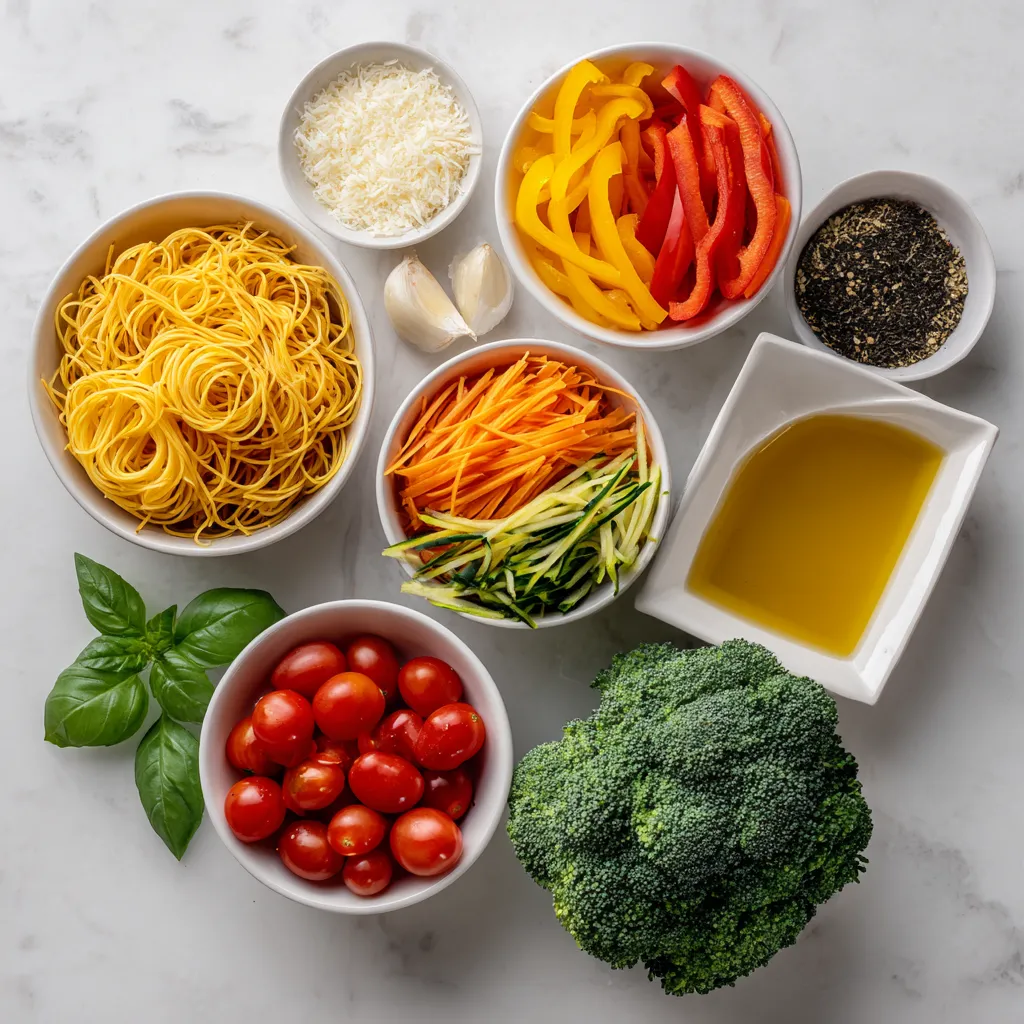
Step-by-Step Instructions
Cooking the Pasta
Start by boiling a large pot of water. Make sure it bubbles well. Add a good amount of salt to the water. Then, toss in the whole wheat pasta. Cook it according to the package’s directions until it is al dente. Before draining, save half a cup of the water. Drain the pasta and set it aside.
Sautéing Aromatics
In a large skillet, heat the olive oil over medium heat. Once the oil shimmers, add the minced garlic. Sauté it for about one minute. You want it to smell great and turn a light golden color.
Stir-frying Seasonal Vegetables
Now, add the zucchini, bell pepper, broccoli, carrot, and cherry tomatoes to the skillet. Stir-fry these fresh veggies for about 5 to 7 minutes. They should soften just a bit but still keep their bright colors and crunch.
Combining Pasta and Vegetables
Add the drained pasta right into the skillet with the veggies. Slowly stir in the reserved pasta water, one tablespoon at a time. Mix until the dish is as creamy as you like.
Incorporating Cheese
If you’re using Parmesan, sprinkle it over the pasta. Toss everything together well. This helps the cheese melt slightly and adds great flavor. Enjoy every colorful bite!
Tips & Tricks
Tips for Perfectly Cooked Vegetables
To achieve the best texture, cook vegetables until they are bright and tender. Here are some tips:
– Cut vegetables into similar sizes for even cooking.
– Start with harder vegetables like carrots and broccoli, and add softer ones later.
– Stir-fry over medium heat to keep veggies crunchy.
How to Enhance Flavor Profiles
Boost the taste of your pasta primavera with these simple tricks:
– Use fresh herbs like basil and oregano for a vibrant taste.
– Add a splash of lemon juice for brightness.
– Mix in crushed red pepper for a little heat.
– Consider a dash of soy sauce for depth.
Serving and Presentation Suggestions
Make your dish appealing with these ideas:
– Use colorful bowls to highlight the bright veggies.
– Drizzle extra olive oil over the top for added richness.
– Garnish with whole basil leaves for a fresh look.
– Sprinkle more cheese on top for a delicious finish.
Pro Tips
- Fresh Ingredients Matter: Always use the freshest vegetables you can find for the most vibrant colors and flavors in your pasta primavera.
- Customize Your Veggies: Feel free to substitute or add any seasonal vegetables you enjoy, such as asparagus, peas, or spinach, to make the dish your own.
- Perfect Pasta Texture: Remember to cook the pasta al dente; this will help it hold its shape and provide a nice texture against the tender vegetables.
- Save the Pasta Water: The starchy pasta water is a great way to add creaminess to your sauce, so don’t forget to reserve some before draining!
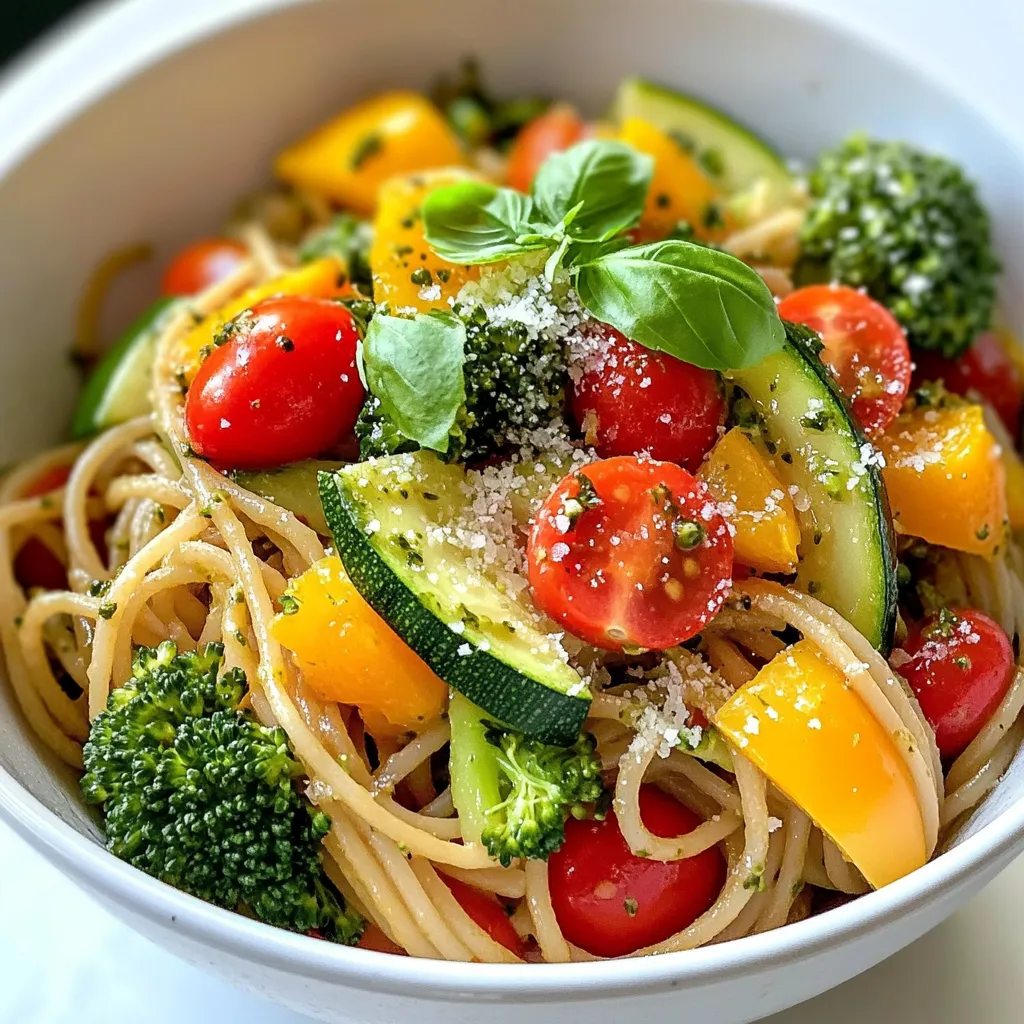
Variations
Protein Add-ins (Tofu, Chickpeas, etc.)
You can boost your Pasta Primavera with great proteins. Tofu is a popular choice. Use firm or extra-firm tofu for the best texture. Simply cube it and sauté until golden. Chickpeas also work well. They add a nice creamy texture. Add one can of drained chickpeas to the veggies while they cook. Both options make the dish more filling and nutritious.
Vegan Options
If you want to keep it vegan, swap out the Parmesan cheese. Use nutritional yeast instead. It has a nutty taste, and it adds flavor. You can also add more veggies like mushrooms or spinach. These will add depth and nutrition without any dairy. It’s easy to make this dish completely plant-based and delicious.
Gluten-Free Pasta Choices
For a gluten-free option, choose gluten-free pasta. Many brands offer rice or corn-based pasta. These cook similarly to traditional pasta. Follow the package instructions for best results. You can still enjoy all the flavors of this dish without gluten. Just remember to check the labels to avoid cross-contamination if needed.
Storage Info
How to Store Leftovers
To store your Pasta Primavera leftovers, let the dish cool down first. Place it in an airtight container. This keeps it fresh and prevents odors from mixing. You can store it in the fridge for easy access to a tasty meal.
Reheating Instructions
When you are ready to enjoy your leftovers, use the microwave or stovetop. If using a microwave, place the pasta in a bowl and cover it with a damp paper towel. Heat it for one to two minutes. For the stovetop, add a splash of water or olive oil in a pan. Heat it over medium-low heat for about five minutes, stirring often.
How Long it Lasts in the Fridge
Your Pasta Primavera will last up to three days in the fridge. After that, the veggies may lose their crunch, and flavors might fade. Always check for any off smells or changes in texture before eating.
FAQs
What is Pasta Primavera?
Pasta Primavera is a fresh pasta dish packed with colorful vegetables. It means “spring pasta” in Italian. You can use any pasta type, like spaghetti or penne. This dish shines when you use seasonal vegetables. Each bite is vibrant and tasty.
Can I make this dish ahead of time?
Yes, you can make Pasta Primavera ahead of time. Cook the pasta and veggies as directed. Store them in an airtight container in the fridge. When ready to eat, reheat in a skillet. Add a little olive oil or water to keep it moist.
How can I make Pasta Primavera creamier?
To make Pasta Primavera creamier, add reserved pasta water slowly. Start with one tablespoon at a time. You can also mix in cream or plant-based milk. A sprinkle of cheese adds richness too. Just toss everything until well mixed.
What vegetables can I use in Pasta Primavera?
You can use many vegetables in Pasta Primavera. Some great choices are:
– Zucchini
– Bell peppers
– Cherry tomatoes
– Broccoli
– Carrots
– Spinach
– Asparagus
– Peas
Feel free to swap or add any veggies you love. Use what’s fresh and in season for the best taste!
In this blog post, we explored the tasty world of Pasta Primavera. We covered key ingredients, fresh produce tips, and step-by-step cooking methods. Understanding flavor enhancements and serving suggestions is important for success. You can enjoy many variations, from adding proteins to accommodating dietary needs. Finally, storing leftovers correctly ensures you make the most of your meal. Pasta Primavera is a simple, colorful dish that anyone can make. Now, go enjoy your cooking adventur
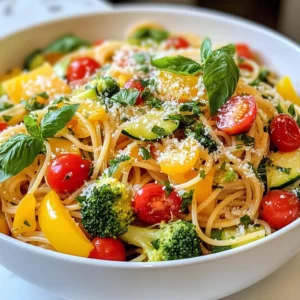
Vibrant Veggie Pasta Primavera
Ingredients
- 8 oz whole wheat pasta
- 2 tablespoons extra virgin olive oil
- 1 small zucchini, thinly julienned
- 1 bell pepper sliced into thin strips
- 1 cup cherry tomatoes, halved
- 1 cup broccoli florets, cut into bite-sized pieces
- 1 medium carrot, thinly sliced
- 3 cloves garlic, finely minced
- 1 teaspoon dried oregano
- 1 teaspoon dried basil
- to taste salt and freshly ground pepper
- 0.25 cup grated Parmesan cheese
- for garnish fresh basil leaves
Instructions
- Cook the Pasta: Begin by bringing a large pot of water to a rolling boil. Add a generous amount of salt to the boiling water, then add the whole wheat pasta. Cook according to the package instructions until it is al dente. Before draining, reserve ½ cup of the pasta cooking water. Drain the pasta and set it aside.
- Sauté the Aromatics: Heat the olive oil in a large skillet over medium heat. When the oil shimmers, add the minced garlic and sauté for approximately 1 minute, or until it becomes fragrant and just begins to turn golden.
- Add Seasonal Vegetables: To the skillet, add the julienned zucchini, sliced bell pepper, broccoli florets, sliced carrot, and halved cherry tomatoes. Stir-fry the vegetables for about 5-7 minutes, allowing them to soften slightly while retaining their vibrant colors and crunch.
- Season the Mixture: Sprinkle the dried oregano and dried basil into the skillet. Season with salt and freshly ground pepper to taste. Toss the vegetables thoroughly to ensure they are evenly coated in the aromatic herbs.
- Combine Pasta and Vegetables: Add the drained pasta directly into the skillet with the sautéed vegetables. Gradually stir in the reserved pasta water, one tablespoon at a time, until the pasta dish reaches your desired level of creaminess.
- Incorporate Cheese: If using Parmesan, sprinkle it over the pasta and toss everything together until the cheese is well distributed and melts slightly, enhancing the overall flavor.
- Plate and Serve: Serve the vibrant pasta primavera into individual bowls. Garnish each bowl with fresh basil leaves and an extra sprinkle of Parmesan cheese, if desired.

